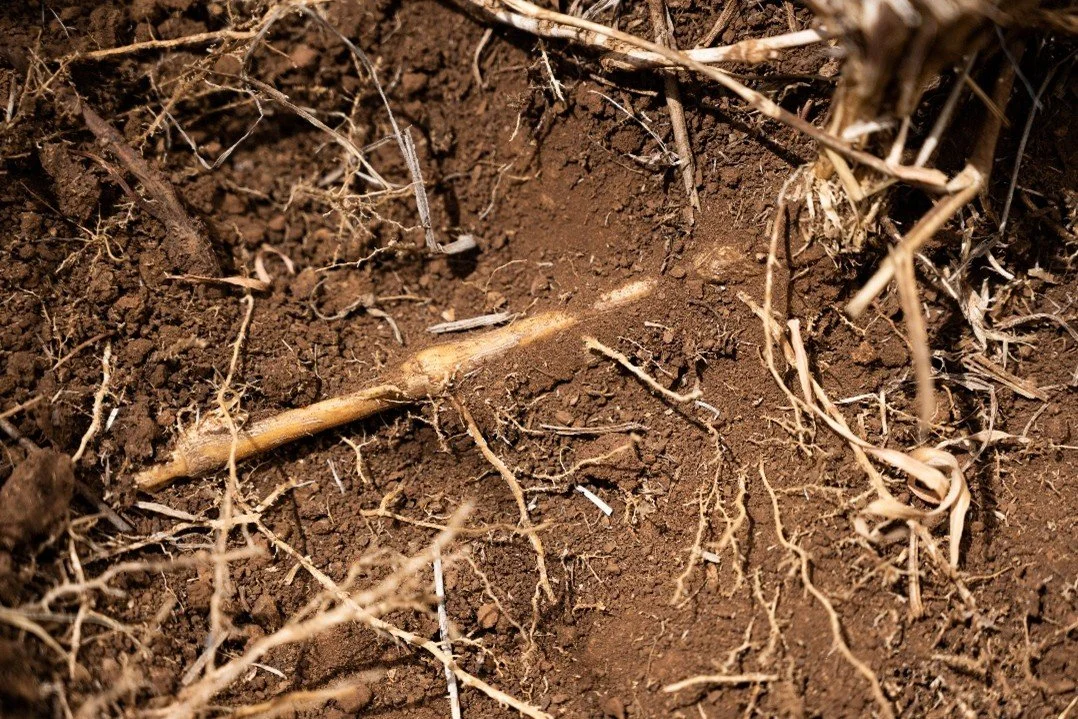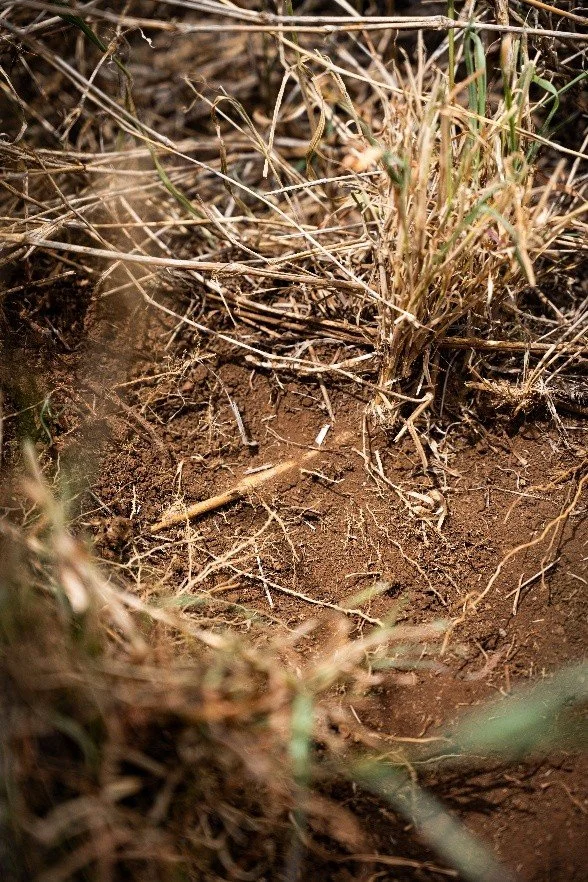Soil Cover and Landscape Integrity
Story by Sue Brown, Photos by Kelvin Trautman
The devastating drought of 2021/22 in Kenya severely stressed the soil, underscoring the urgent need for restoration and conservation efforts. On one side of the boundary fence, within the Lewa Wildlife Conservancy, lies a protected area dedicated entirely to safeguarding wildlife. In stark contrast, the area on the left is used for livestock grazing, exemplifying how different land uses impact soil health. This stark juxtaposition serves as a potent reminder: understanding how landscapes function at the soil level is crucial for preserving landscape integrity and ensuring a thriving environment for future generations. Our actions today will determine the health of our land tomorrow.
Perennial C3 Grasses are Cool
This is an arid landscape in Northern Kenya, delicate and vulnerable to disruption. At midday, bare soil temperatures on red soil can be up to 20% higher than those beneath grass cover, emphasising the critical importance of maintaining ground cover. This temperature difference is even greater on black soil, as the images below show, highlighting the significance of perennial grass cover for temperature regulation and soil health. The stability of soil temperature, in turn, significantly improves the survival chances of soil fauna and flora, which are vital to a healthy and thriving ecosystem.
During the peak of the dry season, dormant perennial grasses turn a striking pale silver, demonstrating a vital environmental benefit. Their reflective surface actively reduces the harshness of sunlight, creating an albedo effect that significantly lowers ambient temperatures. By doing so, these grasses not only protect the ecosystem from extreme heat but also enhance its resilience, making them an invaluable natural ally in the fight against climate change.
During this devastating drought, our findings showed remarkable resilience in the grasses that support the diverse wildlife within the Lewa Wildlife Conservancy. We carefully examined the moisture content of Cenchrus stramineus, known as ‘wire grass,’ the dominant and hardy species amongst over a hundred other species occurring on Lewa. Despite appearing completely dried out, this resilient grass retained 14% of its moisture—a clear sign of its extraordinary ability to survive harsh conditions. This resilience isn’t just impressive; it’s vital. These grasses play a crucial role in maintaining ecosystem health, protecting sensitive meristems, and enabling rapid responses to even small amounts of rain. Protecting and learning from such resilient species is essential for ensuring the sustainability of our ecosystem amid increasing climate challenges. By recognising the innate value of ‘wire grass’ and working to understand the nature of nature, we invest in the future’s resilience and the health of our environment for generations to come.
Rooting for resilience
On these red soil hills, the fragile topsoil layer is delicate and must be fiercely protected. Resilient perennial grass roots, which penetrate deep into the rocky, sandy subsoil, are vital for this preservation. They not only prevent erosion and promote rainwater absorption—minimising runoff—but also actively store soil organic carbon, which is crucial for maintaining the landscape's health and stability. Preserving this delicate environment is vital for our future, as it safeguards the land that sustains us all.
The fine root system of Cechrus stramineus, or wire grass, extends down to an impressive two metres, demonstrating its remarkable ability to access and replenish landscape water. This significant root depth ensures that, immediately after rain, water quickly percolates deep into the soil, providing essential nourishment not only for the grass itself but also supporting a diverse range of forb species. These plants work together and thrive collectively, highlighting the vital role of the many grasses in maintaining the health and resilience of these grassland ecosystems.
Connected cover
The root connections of perennial C3 grasses form an intricate underground network that is essential for maintaining the landscape's strength and cohesion. While the full extent of these connections remains a fascinating mystery, their significance is undeniable. In Lewa alone, more than a hundred grass species showcase this remarkable resilience through their extensive, interconnected root systems— a true testament to nature's ingenuity. These complex networks not only stabilise the fragile underground layer but also play a crucial role in supporting ecological stability and resilience. Recognising the vital importance of these grasses underscores the need for their protection and conservation, ensuring our ecosystems remain healthy and robust for generations to come.
Thanks to a 2021 study from the CIFOR-ICRAF team, using the Land Degradation Surveilance Framework in Lewa, we gained valuable insights into the underground ecosystem of the landscape. It highlighted the role of arbuscular mycorrhizae as a key component, demonstrating how interconnected systems can significantly enhance drought tolerance in C3 grasses. These grasses form a mutually beneficial relationship with arbuscular mycorrhizal fungi (AMF), which colonise their roots to boost nutrient and water absorption. This symbiosis leads to stronger, healthier grasses that are more resilient to stress, crucial for ensuring the landscape's sustainability and vitality.
ICRAF/LDSF compellingly demonstrated that, through meticulous landscape monitoring, previously unnoticed species associations in complex grasslands come to light. This revelation underscores the vital importance of careful observation in uncovering intricate ecological networks, which can be crucial for developing effective conservation and management strategies.
Conclusion
An area protected for wildlife and allowed to function naturally can serve as a window into grassland dynamics, providing a repository of knowledge on how better to manage semi-arid tropical rangeland for human and livestock use. It ensures the preservation of species that might otherwise be lost, allowing their characteristics to be studied over time, along with the different digestive systems of consumers and their impact on the range.
About the Author
Sue Brown is a life-long ecologist, herbalist and biodynamic farmer who has spent her working life making cheese. Now retired, she lives within the Lewa Wildlife Conservancy, Kenya, where she is a custodian of the land both formally and informally. She devotes her days to plants, respecting them as the catalyst for life, and caring for the soil on which they depend.
Find her on Instagram @milimambogo












